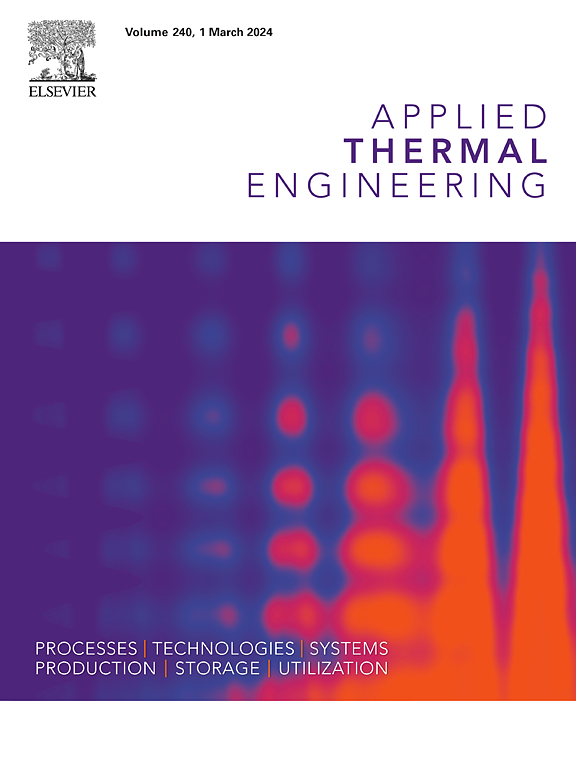Review of salt hydrates materials in phase change heat storage and thermochemical heat storage: mechanism, optimization method and application
IF 6.9
2区 工程技术
Q2 ENERGY & FUELS
引用次数: 0
Abstract
The development of phase change heat storage and thermochemical heat storage technologies promotes the rational use of renewable energy. In particular, salt hydrates (SHS), which has dual-phase heat storage capability, i.e., phase change heat storage and thermochemical heat storage, has been widely investigated in various fields. However, SHS suffers from the problems of phase separation and supercooling in phase change heat storage and deliquescent caking in thermochemical heat storage, and has a common problem of corrosion, which hinders its commercialization and a wide practical application. In this paper, we first summarize and analyze the differences between the mechanisms of SHS phase change thermal storage and thermochemical thermal storage, and then conduct a comprehensive analysis of solving the phase separation and subcooling problems of SHS phase change materials by the thickener method, the shaped packaging method, and the nucleating agent method, and summarize the effects, advantages, and disadvantages of these methods. The preparation of composite SHS materials by loading SHS onto different types of porous carriers to overcome the common agglomeration and deliquescence problems of SHS in thermochemical applications is discussed, and the performance of porous carriers in enhancing the cycling stability is explored, and summarizes how to solve the problem of corrosion of metals by SHS. In addition, the performance of SHS in the field of phase change thermal storage such as battery thermal management, building temperature regulation, healthcare and solar energy harvesting, as well as in the field of thermochemistry such as building heating, is summarized, and finally, the future directions of SHS materials in thermal storage are outlined. The purpose of this paper is to provide theoretical basis and practical guidance for the application of SHS in a wider range of fields, and to promote the continuous progress and development of SHS thermal storage technology.
盐水合物相变储热与热化学储热材料综述:机理、优化方法及应用
相变蓄热和热化学蓄热技术的发展促进了可再生能源的合理利用。特别是盐水合物(SHS),由于其具有相变蓄热和热化学蓄热的双相蓄热能力,在各个领域得到了广泛的研究。然而,SHS存在相变蓄热中存在相分离和过冷问题,热化学蓄热存在潮解结块问题,并且普遍存在腐蚀问题,阻碍了SHS的商业化和广泛的实际应用。本文首先总结分析了SHS相变储热与热化学储热机理的区别,然后综合分析了增稠剂法、形包法和成核剂法解决SHS相变材料的相分离和过冷问题,并总结了这些方法的效果和优缺点。讨论了将SHS加载到不同类型的多孔载体上制备复合SHS材料,以克服SHS在热化学应用中常见的团聚和潮解问题,并探讨了多孔载体在提高循环稳定性方面的性能,总结了如何解决SHS对金属的腐蚀问题。总结了SHS材料在电池热管理、建筑温度调节、医疗保健、太阳能收集等相变蓄热领域以及建筑采暖等热化学领域的性能,并展望了SHS材料在蓄热领域的未来发展方向。本文旨在为SHS在更广泛领域的应用提供理论依据和实践指导,促进SHS蓄热技术的不断进步和发展。
本文章由计算机程序翻译,如有差异,请以英文原文为准。
求助全文
约1分钟内获得全文
求助全文
来源期刊

Applied Thermal Engineering
工程技术-工程:机械
CiteScore
11.30
自引率
15.60%
发文量
1474
审稿时长
57 days
期刊介绍:
Applied Thermal Engineering disseminates novel research related to the design, development and demonstration of components, devices, equipment, technologies and systems involving thermal processes for the production, storage, utilization and conservation of energy, with a focus on engineering application.
The journal publishes high-quality and high-impact Original Research Articles, Review Articles, Short Communications and Letters to the Editor on cutting-edge innovations in research, and recent advances or issues of interest to the thermal engineering community.
 求助内容:
求助内容: 应助结果提醒方式:
应助结果提醒方式:


